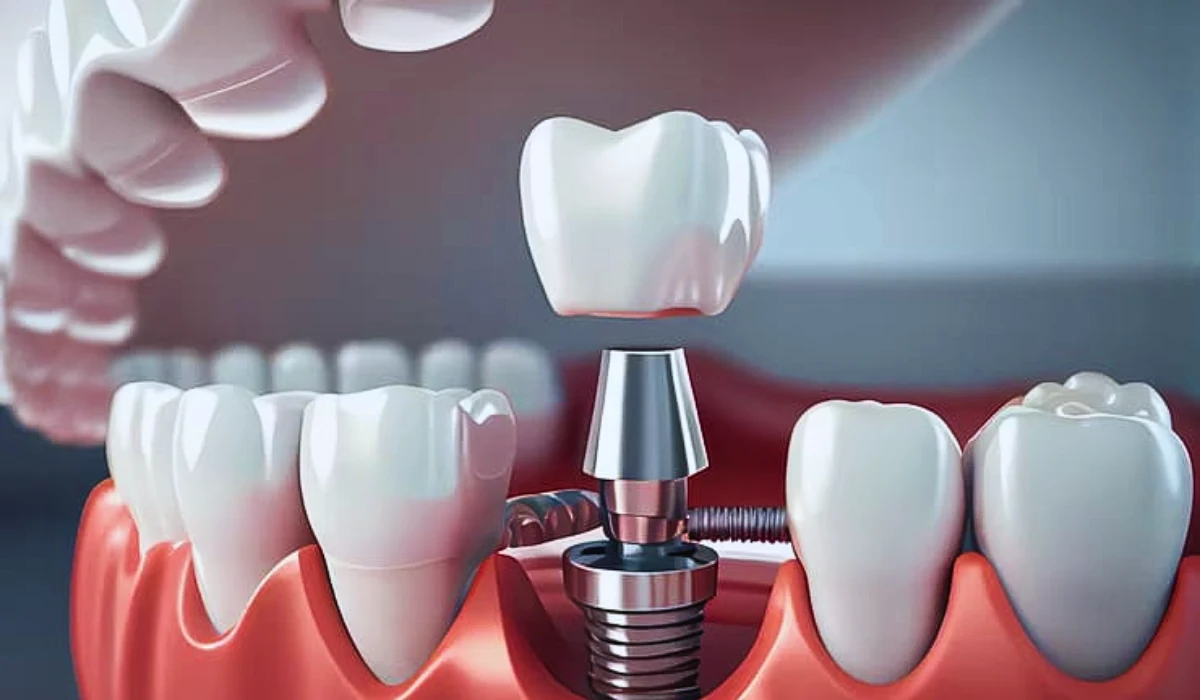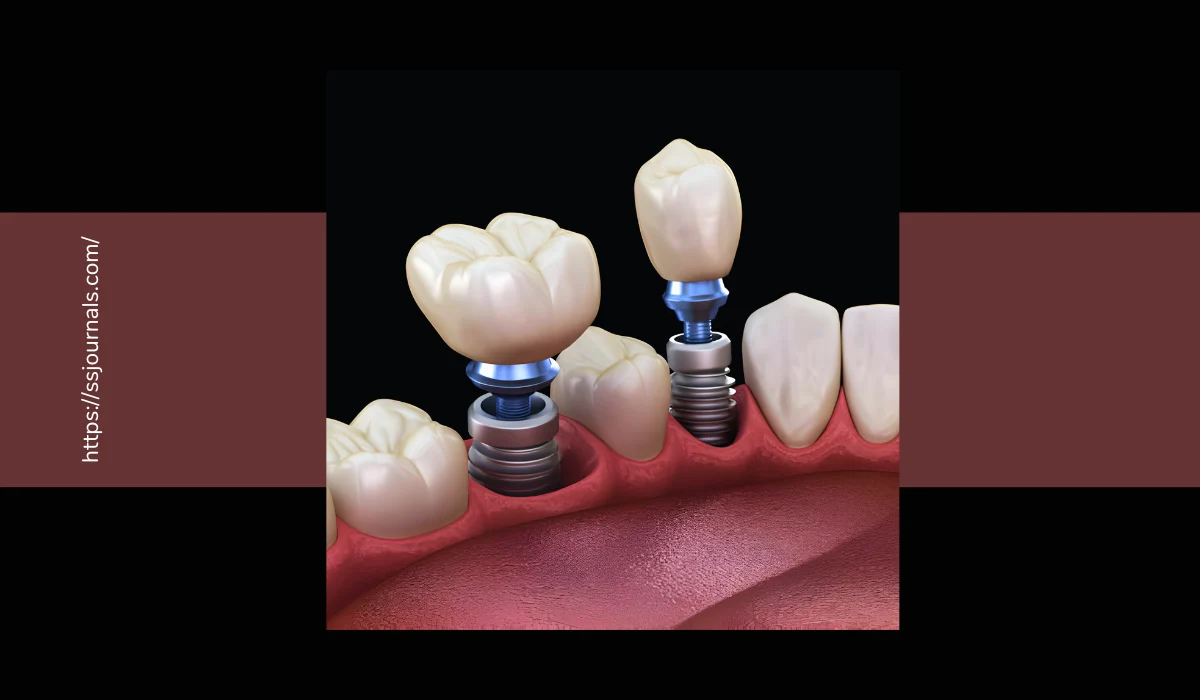An endosteal implant is a type of dental implant that is surgically placed into the jawbone. The endosteal implant procedure involves the dental surgeon making a small incision in the gum to expose the bone.
They will then drill a hole into the bone where the endosteal implant post is inserted. Over the next several months, the jaw bone grows around the implant post in a process called osseointegration.
This creates a strong, stable base for replacement teeth to be attached to. Once healed, the gum tissue is opened again and an abutment is connected to the endosteal implant post which the replacement tooth will mount onto.
There are over a million endosteal implant procedures performed in the U.S. every year. They have become a popular tooth replacement option for patients because they look and feel like natural teeth.
They also allow patients to speak and eat comfortably without worrying about their teeth slipping or coming loose. This article will discuss what endosteal implants are, the endosteal dental implant procedure, their benefits over options like subperiosteal implants, as well as things to consider before getting an endosteal implant.
What are Endosteal Implants?
Endosteal implants are artificial replacement teeth root structures that are surgically embedded into the jawbone beneath the gums. Their purpose is to mimic a natural tooth root and provide solid support for one or more artificial replacement teeth or dentures.

They are made of titanium, which allows them to fuse with jawbone through a process called osseointegration. Once healed, endosteal implants are very stable and secure, which allows replacement teeth to look, feel, and function like natural teeth without slippage or movement.
The Endosteal Implant Procedure
The endosteal implant procedure is done in multiple steps, usually spaced weeks or months apart to allow for healing and osseointegration.
The first step involves surgically implanting the endosteal implant post into the jawbone. After numbing the area with local anesthesia, the oral surgeon will make a small incision in the gums to expose the bone.
Using precision guides, they will drill holes into the bone where the endosteal implant metal posts are placed snugly. The gums are closed with a few stitches which dissolve within a week or two.
Over the next 4-6 months, bone cells attach themselves to the implant surface in a process known as osseointegration. This fuses the metal posts to the bone, providing a sturdy foundation for replacement teeth.
After the site has healed sufficiently, the next step is bringing the endosteal implant post-op through the gums so an abutment for the replacement tooth/teeth can be attached.
The oral surgeon opens the gum tissue over the implant and affixes an endosteal implant abutment which the artificial tooth will mount onto. After closing the gums around it, the site is given a couple of weeks to heal again.
Finally, the patient returns to have their replacement tooth, crown, bridge, or denture securely fastened to the endosteal implant abutments. These can be fixed or removable. With proper care and maintenance, endosteal implant-supported teeth typically have over a 95% success rate and can last decades.
However, to sustain results it’s vital to practice good oral hygiene and avoid damaging habits like chewing ice or grinding teeth.
Subperiosteal Implants
Subperiosteal implants are an older type of dental implant placed under the gum and gums but over the jawbone. They are composed of a metal frame that wraps around the bone topped by metal posts that stick through the gums. Replacement teeth attach to these posts. While still used today, subperiosteal implants are less ideal than endosteal implants for several reasons:
- Placement can damage bone cells – Drilling into bone triggers growth factors while placing an implant on bone can lead to bone loss.
- Increased infection risk – Any exposed metal that pierces the gums introduces bacteria and infection risks. Healing is also longer.
- Less durable long term – Since the implant sits on no bone, over decades it can fail or teeth can come loose. Success rates are 10-15% lower versus endosteal implants after 10 years.
- Limited replacement options – Subperiosteal implants mainly support non-removable bridges, not standalone crowns or removable dentures/partials.
Overall endosteal implants provide superior stability for supporting all types of tooth replacements – individual crowns, bridges, full dentures, and removable partials.
They more closely replicate how natural tooth roots behave under the forces of biting and chewing as well. This translates into replacement teeth that are comfortable, durable, convenient, and life-like.
Considerations Before Endosteal Implants
While over 98% effective when done properly. Endosteal implants do involve a sizable investment as they are designed to last upwards of 25 years or longer. The procedure is also surgical in nature. Important factors to consider before opting for endosteal implants include:
- Cost – Expect to spend $3000-$5000 to replace a single tooth with an endosteal implant. While more affordable than in years past, it remains a higher cost than a dental bridge. So, remember to check your dental insurance coverage.
- Healthy gums and bone density – Soft tissue and bone must be healthy enough to heal firmly around the implant. Chronic illnesses requiring medications can inhibit this. A dental exam is needed to determine candidacy.
- Multiple visits are required – The procedure takes months as the implants must fuse to the bone before teeth are attached. This demands a sizable time commitment.
- Avoid smoking and poor hygiene – Both smoking and poor oral hygiene negatively impact implantation success rates. Patients must commit to long-term care and maintenance as well to ensure longevity of the results.
- Temporary denture during healing – Be prepared to use a removable temporary denture for the 4-6 month period during osseointegration healing.
For those seeking permanent, stable, and natural-looking replacement teeth that restore confidence and allow them to speak and eat without restriction. Endosteal implants present an increasingly accessible option. Talk to your dentist today about whether you might benefit from endosteal implants.
Conclusion
Endosteal implants offer an innovative approach to replacing missing teeth permanently and beautifully while also rebuilding lost bone and gum tissue support in the process. As opposed to conventional bridges or dentures which merely rest over the gums. Endosteal implants fuse with the jawbone for unparalleled stability and a more natural replication of original tooth roots.
The biocompatible titanium posts provide an ideal structure for both individual crowns and entire arches of teeth to attach onto. With over 98% effectiveness when properly placed by a seasoned oral surgeon, endosteal implants can indeed deliver the closest thing modern dentistry has to imitating natural teeth.
They restore full functionality for speaking, smiling, laughing, chewing, and bite force/stability. Moreover, avoiding the need to grind down adjacent healthy teeth for bridges or deal with the social stigma and discomfort of removable partials or ill-fitting dentures is life-changing for many patients.
Yes, there remains an investment of time, money, and lifestyle adjustment needed during the 4-6 month implantation period and beyond. Yet for the nearly quarter million patients who opt for endosteal implant procedures every year in the U.S., gaining back confidence, comfort, and peace of mind is well worth it. From single tooth gaps to completely edentulous jaws, endosteal implants offer new hope.
Knowing the ins and outs of endosteal implants, would you give this procedure a try?

